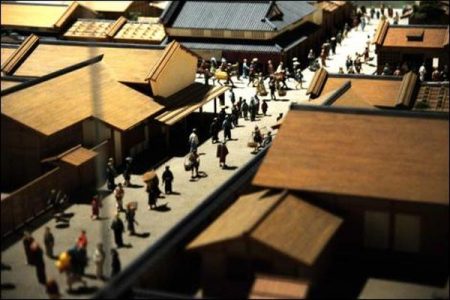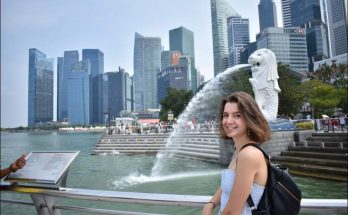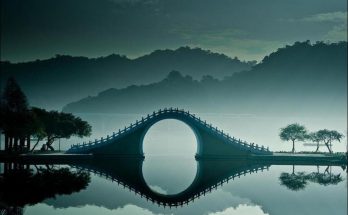As Tokyo is situated on the Sumida River which pours into Tokyo Bay to swell the mighty Pacific, its former name, Edo (estuary-door), sounds more poetical and appropriate. But the political conquerors from the south, who destroyed the Shōgunate in 1868, could not tolerate anything reminiscent of the old régime.
They therefore displaced Edo in favor of Tokyo (eastern capital) as distinct from Kyoto (western capital). The amazing strides made by Tokyo, or rather by Japan, are identified with the august rule of the Emperor Meiji ( 1868-1912) which future historians will probably call the most glorious in the annals of the Empire.
But it is impossible to forget the founding of the city, as laid in Edo days, or the 260 years of the Tokugawa régime. Over sixty years have passed since Edo was changed to Tokyo, but the study of Edo is constantly made with ever-increasing zeal, each year adding new discoveries to the great legacy. Many of Japan’s most celebrated names in art, the crafts and literature, which are beginning to attract the admiring attention of the world, belong to Edo. Many of the picturesque national observances–manners, customs, festivals and superstitions — had also their origin in Edo days.
It is curious to reflect that Edo, too, was once threatened with a grave crisis. With the fall of the Shōgunate, many of the 300 resident daimyō, liberated from the feudal obligation to keep expensive estates in Edo, began to go home bag and baggage, thereby throwing the shadow of the fear over Edo that the city might relapse into the trackless reed moor that it once was. This fearful possibility, how ever, was gloriously averted when the Emperor made the momentous declaration that he would appoint Edo (then changed to Tokyo) the capital of the Empire, and would remove from his old home, Kyoto, to the new capital, Tokyo.
Edo days lasted, to be precise, 277 years and eight months, i.e. from August of 1590, when Ieyasu was appointed by Hideyoshi to be lord of Kwantō district and took formal possession of Edo, until April 11th, 1868, when the 15th Shōgun, Yoshinobu, then 31 years old, restored the castle as well as the government of Japan to Meiji Tenno, then a young man 16 years old. Kwantō, it may be added, is a large tract of land comprising the eight provinces and the seven islets of Izu, or, to use the present administrative divisions, seven prefectures, including Tokyo prefecture of which Tokyo city is a part.
How Ieyasu, the master of Kwantō, succeeded in ousting his former chief, Hideyoshi, and made himself the overlord of all Japan, is part of the absorbing history over which space forbids us to linger. Suffice it to say that it was the determined policy of Ieyasu and his successors to make Edo the greatest city in Japan, even to outshine Kyoto and Osaka, not only as the political center, but as the center of Japan’s artistic and cultural life — an ambition which was realized to a marvelous degree. No wonder we now see each year adding more and more to “Edo literature,” as if Edo had been the golden age of Japanese civilization.
For one thing, we have still living among us a large number of influential persons whose minds are richly stored with memories of Edo days. The last baby born in Edo is now ( 1934) only a young person of 67 years. Indeed, so much is said and written about Edo that we are apt to forget that Edo is very much older than the so-called Edo days.
Visits: 151



